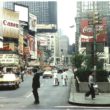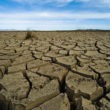A year after superstorm sandy crashed into the heart of the Northeast, two things are clear. One, climate change is here, its costs are already high, and they are likely to climb higher soon. Two, political leaders in the region have shown that there is an alternative to head-in-the-sand denialism—namely, taking forward-looking steps to reduce risk and prepare for climate change, as well as addressing many of the other threats to our air, our water and our health.
In fact, with New York City’s high population density, extensive demands for energy, water and other resources, intensive coastline development threatened by rising sea levels, and pressure to cope with, and reduce, vast waste streams, the metropolitan region has become the epicenter of the American environmental challenge.
The most recent examples, of course, came in Sandy’s aftermath. Once cleanup and recovery operations from the $65 billion killer storm were underway, leaders pivoted to prevention. In February, New York Governor Andrew Cuomo announced a $400-million floodplain buyout program that would lower the number of residents and businesses in the most vulnerable areas and convert the purchased properties into parkland, wetlands, and dunes that would serve as sponges in future disasters. A few months later, New York City Mayor Michael Bloomberg unveiled a $20 billion plan to make the city more resilient to the inevitable effects of climate change, with new flooding fortifications and smarter planning.
The New York City region can contribute to global and national challenges as it has in the past—by being a leader locally and regionally. Bloomberg’s tenure has had a major focus on sustainability, clean energy and global warming reduction. The next mayor must maintain this momentum.
Those steps continued a pattern of enlightened thinking in the region about climate change—and more broadly sustainability. In 2006, for instance, the Regional Greenhouse Gas Initiative (RGGI) was started under then-Governor George Pataki, the first market-based regulatory program in the country, which caps and reduces power-plant carbon pollution in nine Northeastern states. Under Governor Cuomo, New York is the only state that has put a de facto moratorium on the oil-and-gas drilling technique of hydraulic fracturing—or fracking—until all the health and environmental risks are fully evaluated.
In the City, Mayor Bloomberg launched PlaNYC, a comprehensive blueprint to create a more sustainable city, with specific targets for air, water, housing, green space and waste reduction, including a goal of cutting the city’s carbon emissions by 30 percent. To that end, New York City has become a leader on building energy efficiency, creating innovative models, such as the New York City Energy Efficiency Corporation, which is helping buildings retrofit to save energy, and adopting the most comprehensive set of initiatives to cut energy consumption in large buildings. New York City also has some of the best drinking water in the country, supplied largely unfiltered from reservoirs upstate, and since the 1990s has spent an estimated $1.5 billion to purchase land and help upgrade local sewage systems to protect the watershed. This has not only enhanced the environment, it has saved money, namely the $10 billion to $15 billion that would have been needed to build giant filtration plants, as well as the hundred million dollars it would cost to operate them each year.
Outsiders may be surprised to learn that not only is New York City a hub of artistic and financial innovation, but for well over 100 years it has been a hub of environmental innovation. New York was green long before green was cool.
The gravity-driven water supply system, still a marvel, was begun in 1842; today the system supplies 1.4 billion gallons of clean water every day and is the envy of cities around the world. When New York’s landfills were built early in the 20th century, they were the most modern in the world and engineers came from all over to study them. (We have since learned, of course, that there are better trash disposal alternatives, like recycling, composting and waste prevention.)
Jamaica Bay Wildlife Refuge is the country’s only wildlife refuge accessible by subway, and an important stopover for hundreds of thousands of birds migrating along the Atlantic Flyway.
More than 40 years ago a group New York lawyers filed suit to stop Con Edison from building a power plant on Storm King Mountain in the Hudson Highlands. It is considered one of the first real environmental law decisions, as well as the spark for founding my organization, the Natural Resources Defense Council (NRDC).
New York’s high density and vast public transit system mean it has also long been highly energy efficient—the average New Yorker’s carbon footprint is a third of the average U.S. resident’s.
So with all the focus on sustainability, it is fair to ask, as the late Mayor Ed Koch might have put it, “How’re we doin’?” Are the plans ambitious enough? Are they achieving their goals? Are there other problems that we have yet to come to grips with? What more could citizens be doing, politically and personally, to make the region’s economy more sustainable?
Any environmental audit should start with waste, and our success in cutting it. Waste is always bad, and reducing it is almost always the most cost-effective solution to a problem, whether it’s carbon emissions or sewage treatment. New York City’s Greener, Greater Buildings Plan aims to cut the energy waste in the city’s thousands of residential and commercial buildings, whose energy use accounts for 75 percent of the city’s greenhouse gas emissions. So far, according to the most recent report, the city has “benchmarked” (measured the baseline energy use of) almost two billion square feet of real estate, made dozens of city code provisions greener, increased solar capacity more than 10-fold, and covered more than 3.5 million square feet of roofs with reflective white coating that cuts cooling costs. The city has completed efficiency retrofits on 174 of its own buildings, for an annual savings of $6.4 million in energy expenses—just one element of a comprehensive effort to “lead by example” and reduce emissions from its own operations 30 percent by 2017.
New York State has demonstrated leadership on reducing emissions through additional clean energy initiatives, including the state’s “Build Smart” program to save energy in state-owned and state-managed buildings. Cuomo has committed to create an innovative Green Bank to leverage private financing to advance renewable energy and energy efficiency. In addition, the governor has committed to extending for a full decade New York’s successful NY-Sun Initiative, a public-private partnership promoting solar power.
Another form of waste is storm water—during heavy rains, the city’s aging “combined” sewer systems spew raw sewage into the rivers and bays. Storm water is the city’s biggest source of water pollution and a major pollution source statewide in both New York and New Jersey. Much of this runoff ends up on the beaches: The NRDC’s annual “Testing the Waters” report showed that in New York and New Jersey in 2012 there were nearly 2,000 days of beach closings or health advisories, with storm water or sewage identified as a cause the vast majority of the time. New York State has adopted storm water standards for new development and redevelopment projects, which promote the use of “green infrastructure”—such items as strategically located street plantings, porous pavements, and green roofs—to capture and utilize storm water before it reaches overburdened sewer systems. In January 2012, a court ruled that the state must more vigorously exercise its oversight authority to ensure municipalities reduce polluted runoff.
New York City last year committed more than $1 billion to transform paved spaces—along roadways, sidewalks, and schoolyards, for example—with green infrastructure to reduce sewage overflows. This represents a dramatic shift in thinking. Instead of viewing storm water as waste, New York is turning it into a resource. Nearly 800 older cities around the country have similar combined sewers. If the largest city in the U.S. can tackle its chronic water pollution problems with green infrastructure, others can, too.
We normally don’t think of leftovers and food scraps as waste, but in fact, food waste is the largest single portion of the residential waste stream, accounting for more than 20 percent of municipal trash, in New York City and nationally. Disposing of it conventionally—that is, trucking it to landfills and incinerators—has adverse impacts on our air, water and land. New York is undertaking three demonstration projects to collect food waste from single-family residences, school lunchrooms, and high-rise apartments. If successful, this program, using the waste for compost or energy generation, has a huge potential to save taxpayer dollars and reduce global-warming emissions.
Success is not guaranteed. Witness New York City’s under-performing conventional recycling effort. Hailed as the most ambitious in the nation when it was launched nearly 25 years ago, the city’s program to collect and reduce the use of paper, plastic and glass has been struggling in recent years. Mayor Bloomberg has moved this year to close this gap in the sustainability record with aggressive new policies to be overseen by a recycling czar, the first-ever Deputy Sanitation Commissioner for Recycling and Sustainability. In one early step, the city has just launched the biggest expansion of its recycling program in more than two decades by designating all “rigid plastics” recyclable.
Of course, the region’s biggest waste reduction program is the one that addresses directly the major long-term threat to the economy and the environment: climate change. (Just embracing the term puts the region ahead of much of the country.) In the five years that it has been fully operating, the Regional Greenhouse Gas Initiative (RGGI) has helped reduce power-plant carbon pollution by 30 percent—even as the regional economy has grown by 20 percent.
RGGI features an auction system for carbon allowances—the quarterly June bidding brought in $124.4 million—that lets the market determine the most cost-effective way to cut power-plant pollution. That usually means more efficiency and less waste.
RGGI has already kept $765 million in the economies of the nine participating states—Maine, Vermont, New Hampshire, Massachusetts, Rhode Island, Connecticut, New York, Delaware and Maryland—by reducing the amount consumers pay for energy, most of which is paid to out-of-state fossil-fuel suppliers. In addition, by investing the income from the sale of allowances into actions such as making homes and buildings more efficient—creating an estimated 16,000 good job-years of work that must be done in-state—RGGI will save consumers $1.3 billion on energy bills.
RGGI suffered a setback two years ago when New Jersey Gov. Chris Christie, angling to shore up his bona fides among right-wing Republicans nationally, pulled out of the interstate compact, denouncing it as a “tax.” (Christie insists he’s not a climate denier, and New Jersey’s emissions continue to fall.) Also, earlier this year the member states made some important mid-course corrections, setting lower pollution limits to get the targets back in sync with actual emissions.
In answer to that Kochian question, then, we’re doin’ pretty well. But that doesn’t mean we can’t do better. New priorities on the region’s environmental agenda should include:
• Accelerate the shift to clean energy by improving siting processes for wind and leveraging the purchasing power of the city and large entities to create market incentives for the construction of renewable energy facilities.
• Proceed with plans to build a 350 megawatt wind project off Long Island.
• Extend and increase New York’s Renewable Portfolio Standard to 50 percent by 2025.
• Build upon New York’s Energy Efficiency Portfolio Standard to reduce electricity consumption an additional 20 percent by 2025.
• Continue to tackle congestion by reducing traffic, improving mass transit and other transportation options, and focusing on regional planning.
• Build on the city’s creation of bike lanes and the bike-share program to expand opportunities for bike travel both in the city and throughout the region.
• Expand the use of green infrastructure techniques beyond storm-water pollution by strategically deploying “natural sponges” to reduce flood vulnerability, both in inland areas and on the coasts.
The New York City region can contribute to global and national challenges as it has in the past—by being a leader locally and regionally. Bloomberg’s tenure has had a major focus on sustainability, clean energy and global warming reduction. The next mayor must maintain this momentum.
Peter Lehner, a former head of the Environmental Protection Bureau for the Attorney General of the State of New York, is executive director of the Natural Resources Defense Council, an environmental group based in New York City with more than 1.4 million members and online activists.





0 Comments